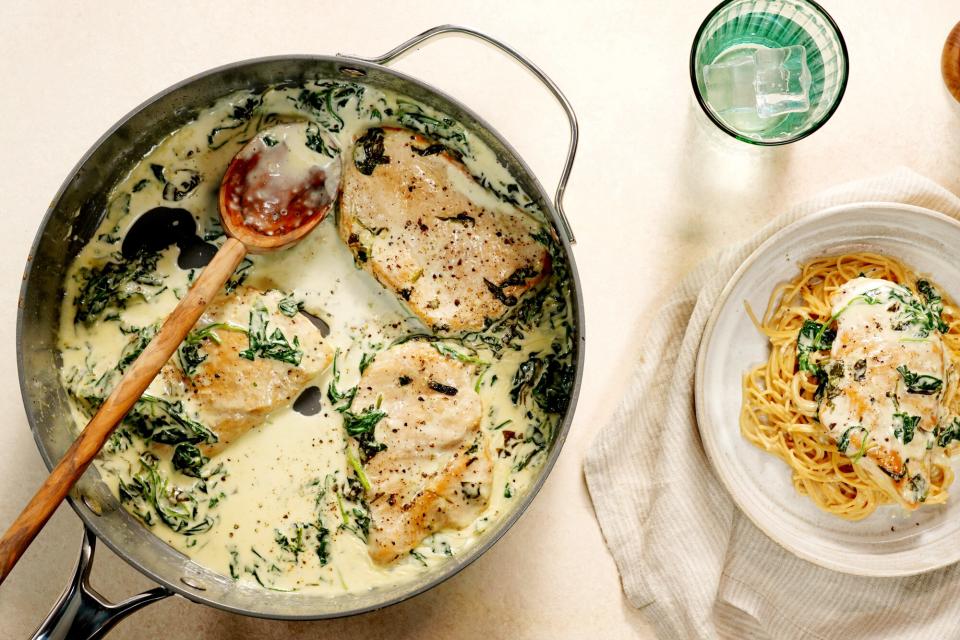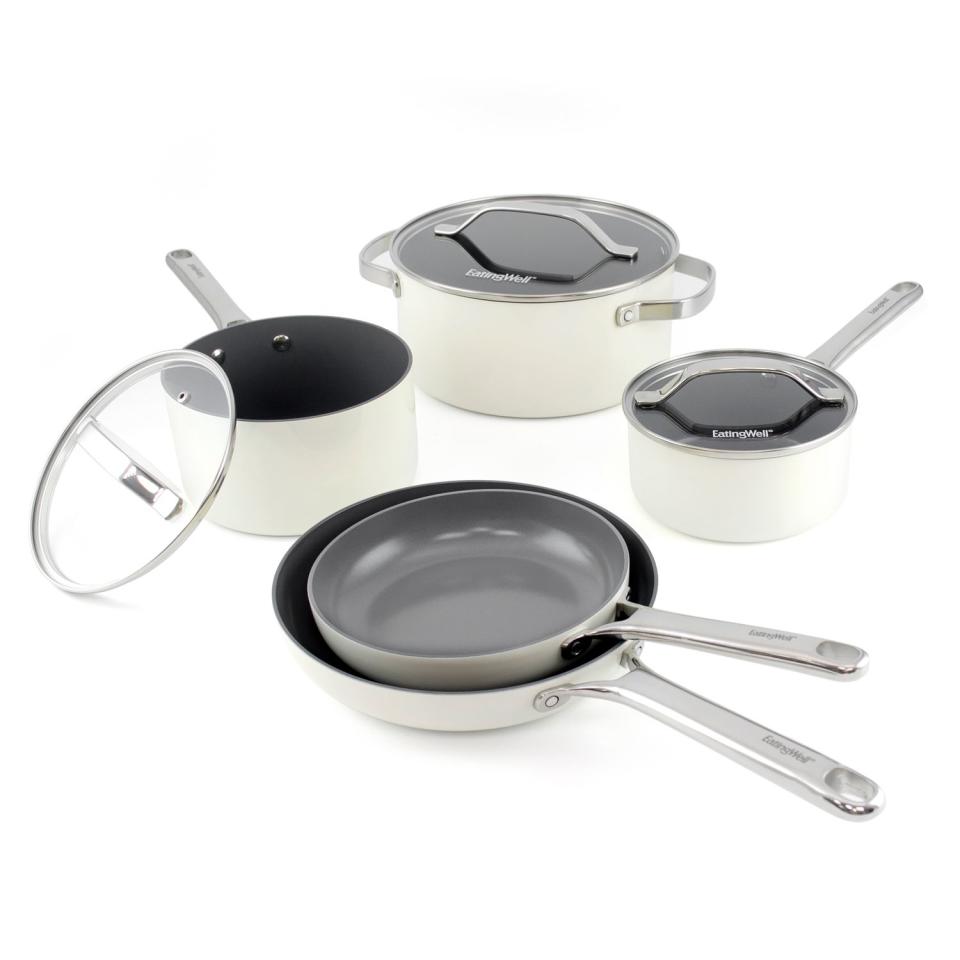Why Are Ceramic Nonstick Pans the Best Nonstick Pans?
Dotdash Meredith and Yahoo Inc. may earn commission or revenue on some items through the links below.

Courtesy of Brand
Nonstick cookware makes even the most novice cooks feel successful in the kitchen. Since food doesn't stick to the surface, nonstick pans are perfect for frying eggs, sautéing fish and cooking food with less oil or butter. Plus, they don't require elbow grease to scrub away any leftover bits, making cleanup feel like a breeze. However, there is some evidence that traditional nonstick cookware might not be good for you. That's when ceramic nonstick pans emerged as an alternative, taking the kitchen cookware scene by storm. But what are ceramic nonstick pans and are they actually better than traditional nonstick? Read on to find out.
Related: EatingWell Just Launched a New Cookware Collection—with 3 Gorgeous Colors for Spring
What Are Ceramic Nonstick Pans?
Despite ceramic being in the name, there's not a bit of ceramic to be found on a ceramic nonstick pan. These pans are made with aluminum or stainless steel and coated with a silicone finish to mimic the smooth, shiny surface of a traditional ceramic. This coating, also known as a sol-gel, is made by suspending particles of a substance like sand in a liquid to make a gel which is then baked onto the pans to create the signature slippery surface of nonstick cookware.
Ceramic nonstick pans come in all shapes and sizes, including small, medium and large skillets, saucepans, large soup pots, Dutch ovens, braisers and more.
How Do Ceramic Pans Differ from Other Nonstick Pans?
Traditional nonstick pans are coated with polytetrafluoroethylene (PTFE). Teflon, the brand that made PTFE famous, was introduced in 1946. Marketed as the easiest way to cook and clean, it's hard to not be wooed by that promise! But you may have heard the term "forever chemicals" thrown around, and some of them, like perfluorooctanoic acid (PFOA), are used to make PTFE. PFOA not only takes a very long time to break down (hence the nickname), it's been classified as possibly carcinogenic to humans by the International Agency for Research on Cancer. Plus PFAS, the group of chemicals that includes PFOA and others used to make nonstick coatings, have been tied to an increased risk for high blood pressure. While most of the largest manufacturers voluntarily stopped using PFAS, there's not enough data to understand the safety of the chemicals that replaced it, and there are still concerns about the fumes released when using PTFE-coated pans to cook.
Are Ceramic Nonstick Pans Safe?
Ceramic nonstick pans are safe as long as they are not overheated or damaged. Ceramic pans are not manufactured with PTFE or PFOA, and this is why you'll often see them labeled as "nontoxic." While they tend to be able to withstand higher heat than PTFE nonstick pans, be sure to check the manufacturer's instructions, as they can vary from pan to pan. Also be careful not to scratch your ceramic pan, which can deteriorate its ability to keep food from sticking to it.
How Should You Clean Your Ceramic Pan?
Ceramic nonstick pans are best cleaned with dish soap and water using the soft, nonabrasive side of a sponge to retain the nonstick surface. Many newer versions of ceramic nonstick pans are dishwasher-safe (check with the manufacturer), but they clean up so easily, we won't blame you if you save your precious dishwasher space for other things!
The Best Foods to Cook in a Ceramic Nonstick Pan
Ceramic nonstick pans are best for cooking fragile and delicate foods that are prone to sticking to stainless-steel pans, such as eggs, pancakes, scallops, fish, veggie burgers and crab cakes. Breaded foods, like breaded chicken or pork, and battered fish are also ideal in a ceramic nonstick pan because you don't need to use as much oil yet will still get a crisp crust.
Foods that require higher heat, such as thick steaks and burgers, are best made in a heavy-duty pan, such as a cast-iron skillet, that can withstand the higher temperatures, though ceramic nonstick pans are fine in a pinch.
Bottom Line
Ceramic pans are a great alternative to PTFE nonstick pans. They're incredibly easy to cook with and easy to clean, plus they can often withstand higher temperatures than a traditional nonstick pan. If you're in the market for new nonstick pans, or if your old pans look scratched, consider ceramic nonstick pans. They're affordable and even come in a wide range of fun colors.
Intrigued? EatingWell just launched its own ceramic nonstick cookware line!

Courtesy of Brand
Buy it: $199.95 on HSN.com

